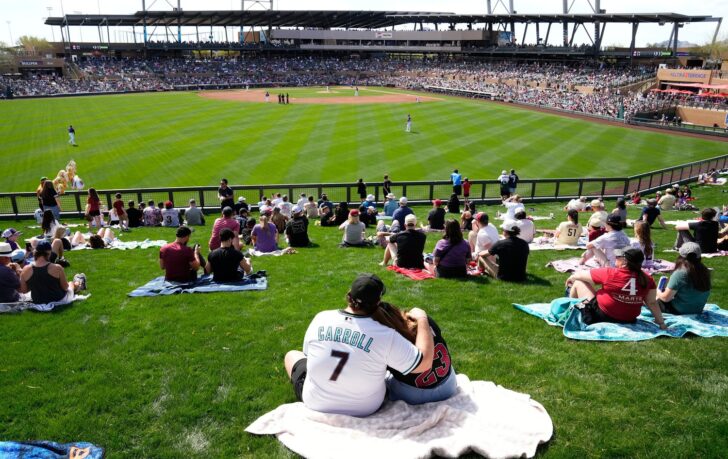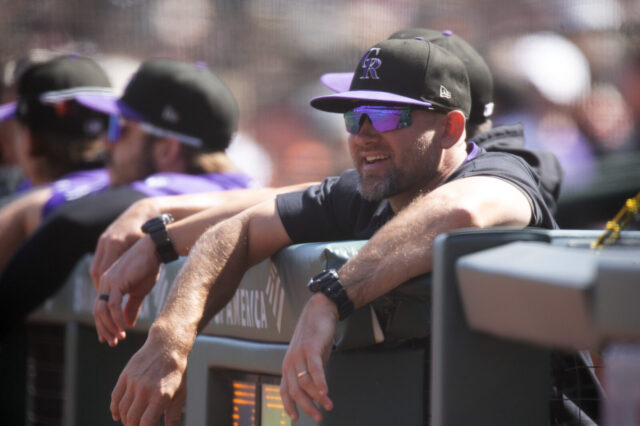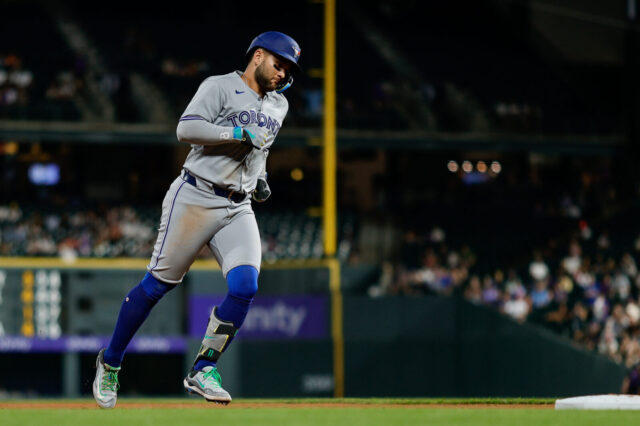Spring Training sure has changed.
Gone are the days when the boys of summer showed up still weary from the winter, ready to recover from an offseason of… let’s call it “holiday cheer.”
These days, we expect ballplayers to keep themselves in supreme athletic condition year-round. It became so cliche we almost don’t say it anymore because everyone is simply expected to show up in the best shape of their life.
Maybe they’ve added a new wrinkle or a new technique but if they are an established MLB player, don’t expect to see much of them until around the halfway point. In the early going, baseball in March has become a bit of a mishmash of minor-league auditions and veterans taking it very slowly.
But those are not the only ways that Spring Training has changed. It has also changed out in the stands.
Where once upon a time a trip down south this time of year used to be the best-kept secret, it has become a full-blown industry.
Where once you could find cheap lodging and buy a seat on the lawn for as little as $9, now the prices have more than doubled. The cheapest ticket you can currently buy at Salt River Fields for the first (practice) game of the year against the Diamondbacks is $19. A February 27th contest against the LA Dodgers (Double-A team) sees lawn tickets jump to $24.
And if you want a deal on a decent place to stay, especially if you want to be near the ballpark, you better have already booked because the number of places that don’t yet know to raise their rates this time of year have dwindled to almost zero.
Where once Spring Training was the best way to take a whole family out to see a lot of baseball without breaking the bank, it has become something that fewer and fewer people can afford.
There are still ways to cheat the system. Take it from a seasoned pro and take in some games on the backfields at Salt River. It’s free, you might get to meet some of the players and get some autographs (don’t be that person, though) and you’ll see roughly the same number of minor leaguers aiming to prove themselves as you will see across the way and under the lights.
Even as it becomes less accessible, it is fascinating to watch how Spring Training has evolved. It’s big business now.
As these massive contracts continue to rise in prominence, we will see even less of the star players during this time of year and as long as fans continue to flock to Arizona and Florida and pay the rising costs, they will keep getting a weirder and weirder brand of baseball for more and more money.
There is nothing inherently wrong with using the springtime to take it slow with your more lumbering vets and experiment a bit with the youth talent in your system. But it’s also become a nightmare for fans who want to track what is happening and not just take in a sunny afternoon.
Pitchers cycle in and out with reckless abandon and unless you’re willing to put in the time to check every single at-bat, a task really only necessary if you are managing the team yourself, it can be almost impossible to tell who’s stats are coming against whom.
OK, cool, your top prospect is hitting .360 with four homers! But did he do all that against Double-A pitching? Did he do that against an MLB pitcher who was working on a new grip or learning a new pitch? Great springs don’t translate to great seasons nor do poor springs lead to poor seasons.
This is always been the dynamic but it used to be something you could simply keep in mind and look at statistics with the proverbial grain of salt. Now outside of the general athletic ability of a player you’ve never seen before, it has become incredibly difficult to tell what is actually happening between the lines.
So maybe the best way to enjoy Spring Training in 2025 is to unplug a bit from the results, forget the “battles” and just take in one of the strangest forms of baseball you can watch.
And unless you’ve got plenty of money to spend, you’re probably best doing so from home.



